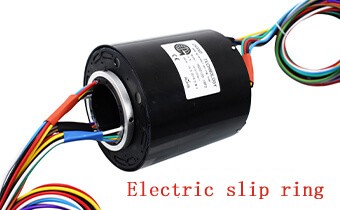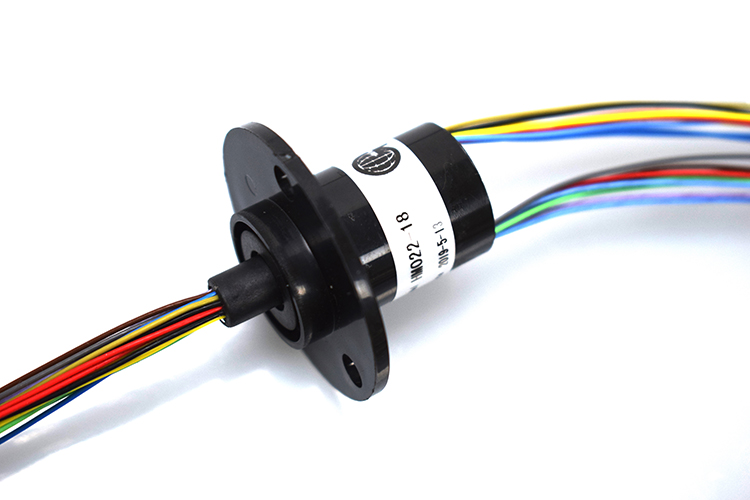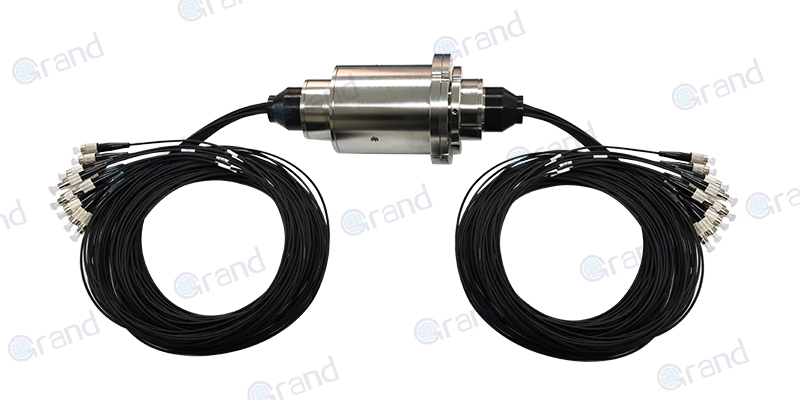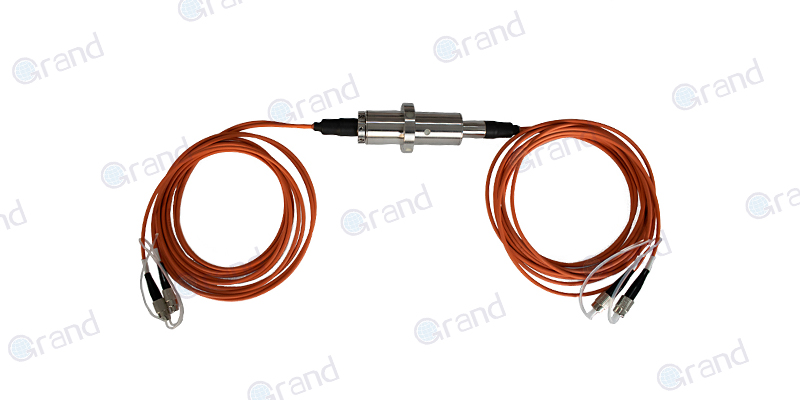This comprehensive guide delves into the role, significance, and challenges of slip ring application in ammunition manufacturing and how advancements in slip ring technology are revolutionizing this landscape.
Introduction to Slip Ring Application in Ammunition Manufacturing
As we chart the landscape of modern manufacturing processes, we come across numerous technologies that have radically transformed how industries operate. One such unassuming yet significantly important piece of technology is the slip ring. Playing an integral role across various industries, slip rings efficiently transmit power and data between stationary and rotating components.
From industrial machinery, and wind turbines, to medical equipment – slip rings have made their imprint far and wide. However, in this article, our focal point is one of the unique industry sectors where precision, consistency, and safety are of exceptional importance: ammunition manufacturing.
In an ammunition manufacturing setup, the premium is placed on seamless continuity and absolute precision. This is an industry where the margin of error is minimal, given that the output — ammunition — has a crucial role in national security and defense. These high standards necessitate the use of technologies that promise not only superior performance but also exceptional reliability. Enter slip rings.
Slip rings in ammunition manufacturing contribute to the automation of numerous tasks that would otherwise be risky, exhaustive, or riddled with inconsistencies. Stage by stage, be it filling, forming, or inspection, slip rings work away in the background, maintaining an unbroken flow of power and signal between the diverse parts of machinery. In an integrated manufacturing environment, slip ring technology acts as a bridge, a seamless connector, ensuring the manufacturing process’s fluidity and synchronicity.
As we dig deeper into the subject, this single underlying theme will guide our exploration: understanding how something as small as a slip ring can have such a significant impact on a process as critical as ammunition manufacturing. Our journey will take us through the corridors of technological advances, challenges, and solutions, making us appreciate the intricate web of connections that make manufacturing possible in our contemporary world. We will uncover the silent revolution that slips rings have brought about in ammunition manufacturing – a testament to the tremendous strides of human innovation.

What is a Slip Ring?
Before we delve into the complexities of slip ring applications in the world of ammunition manufacturing, let’s first grasp what a slip ring is. At its core, a slip ring is an electromechanical device designed to transmit electrical power, data, or signals between a stationary structure and a rotating one. It ensures that the transmission is continuous, thus enabling smooth operation of various electrical systems and machinery.
Picture a typical manufacturing setup. In this arena of immense dynamism, several components are set in ceaseless motion. But these rotating parts also need a continuous supply of power and means to communicate with the static components of the system. The solution – slip rings.
Slip rings, also known as rotary electrical interfaces or electrical rotary joints, enter the scene here. They are designed to be installed into the center of rotation. The stationary component, also known as the “stator,” connects with input sources of power and data, whereas the rotating component, known as the “rotor,” connects with the load. By making continuous electrical connections between the stationary and the rotating parts, slip rings define the operational coherence of intricate, large-scale systems.
Understanding the different types of slip rings brings further clarity to their application. The most traditional model has carbon brushes rubbing against the ring to conduct electricity. However, this contact naturally lends itself to wear and tear over time.
This leads us to more advanced variants like the brushless slip ring, where we see a move away from physical contact. The power or signal is transmitted electromagnetically, drastically reducing the need for maintenance and improving the ring’s lifespan. Similarly, the notion of contactless slip rings also applies in more sophisticated or sensitive setups where even minor friction becomes undesirable.
In summary, while slip rings’ functionality seems straightforward, their role is critical for the smooth operation of many mechanical systems, particularly in a precision-oriented sphere like ammunition manufacturing. Unpacking their significance will help us understand the dynamics when aiming for a seamless, efficient manufacturing environment.

Slip Ring Applications in Ammunition Manufacturing
In the rigorous realm of ammunition manufacturing, the need for precision, consistency, and efficiency is paramount. Meeting these exacting standards requires sophisticated machinery that can operate in a synchronized and streamlined fashion. Slip rings prove instrumental in this context by fulfilling two core functions in the manufacturing process – power transfer and signal transmission.
Power Transfer
Within the ammunition manufacturing process, complex machinery, comprising numerous integrated modules, undertakes a series of tasks such as forming, filling, and inspection. To ensure smooth functioning and consistency, all parts of these machines must receive an uninterrupted supply of power.
Enter slip rings – designed to transfer electricity seamlessly from the stationary components to the rotating ones. A slip ring’s ability to maintain a continuous flow of power while the machinery is in motion helps avoid power interruptions, keeping the production process on track and barriers like downtime at bay. By transferring electricity effectively, slip rings become indispensable for keeping machines operational through various stages of ammunition manufacturing.
Signal Transmission
Beyond power transfer, slip rings also prove integral to an ammunition manufacturing setup for their role in signal transmission. Manufacturing ammunition demands seamless coordination among various elements of the production process, maintaining a rhythm that leaves no room for error. This level of synchronization requires clear and constant communication between different sections of the machinery.
Slip rings enable transferring control and data signals, keeping both the rotating and stationary components in perfect alignment with each other. By transmitting signals efficiently, slip rings allow for smooth communication that orchestrates the finer details of manufacturing. This is especially crucial when dealing with highly sensitive products like ammunition, where the stakes of maintaining consistency and adhering to safety norms are exceptionally high.
In conclusion, slip rings play a pivotal role in the ammunition manufacturing process by ensuring that the machines remain operational and that the diverse components of the system communicate effectively. By transferring power and signals synergistically, slip rings contribute to maintaining precision and efficiency, preventing disruptions that could compromise safety or product quality.
The Significance of Slip Rings in Ammunition Manufacturing
The world of ammunition manufacturing is a dynamic environment that needs to stay in constant motion, with rigorous standards of consistency, safety, and efficiency. This high-stress context demands the best technology and machinery to deliver results that meet every requirement. Among the raft of elements that contribute to this process, slip rings occupy a significant position. Let’s delve deeper into their importance.
Maintaining Production Consistency
In an industry as precise as ammunition manufacturing, variations, however minute, can lead to significant quality and safety implications. Ensuring consistent production flow is not just a matter of efficiency or optimal output; it becomes a matter of paramount importance and reliability. Slip rings help maintain this consistency. By providing an uninterrupted flow of power and signals between the stationary and rotating parts of the machinery, slip rings ensure that the process stays on point, from beginning to end.
Enforcing Safety Standards
The nature of products manufactured in this domain inherently carries risk. As a result, the ammunition industry adheres to rigorous safety standards. By providing continuous transmission of power and signals, slip rings play a crucial part in avoiding interruptions that could lead to machine failures or accidents. In addition, modern slip ring models, such as brushless or contactless types, significantly reduce friction and wear and tear, further enhancing operational safety.
Meeting Industry Standards
Adherence to strict quality standards defines the reputation and credibility of an ammunition manufacturer. Any deviation can affect the final product’s quality, potentially leading to faulty ammunition that can have severe implications. Here again, slip rings play a critical role. The reliable and consistent power supply and signal transmission they ensure contribute to manufacturing processes that uphold and often exceed the industry’s stringent quality standards.
Elevating Overall Effectiveness
In the grand scheme of ammunition manufacturing, the overall effectiveness of the process equates to efficient workflows, minimal downtime, adherence to safety standards, and outstanding product quality. By ensuring continuous power transfer and maintaining constant communication between different machinery components, slip rings enhance the entire manufacturing process’s effectiveness and reliability.
In summary, the significance of slip rings in ammunition manufacturing is profound. Residing subtly in the background, these devices shape the success of ammunition manufacturing in more ways than one. Essential yet often overlooked, slip rings stand testament to the fact that, in the manufacturing world, even the smallest components can have a massive impact on the results.
Key Concerns and Challenges of Using Slip Rings in Ammunition Manufacturing
While slip rings play a crucial role in ammunition manufacturing, there are some concerns and challenges that users of this technology must address to ensure optimal operation and safety. In this section, we will discuss three primary areas: safety measures, maintenance, and scalability.
Safety Measures
Given the nature of ammunition manufacturing, the utmost importance is placed on maintaining a safe working environment. The use of slip rings in this context must also conform to high safety standards. While they ensure smooth and continuous power and signal transmission, adhering to the guidelines for installation, operation, and maintenance is critical. Users should follow manufacturer-recommended protocols and guidelines for the specific slip ring types in use. Additionally, opting for technologically advanced slip ring solutions, such as brushless or contactless models, can minimize wear and tear, further reducing safety risks.
Maintenance
Regular maintenance of slip rings is essential in ensuring long-term life and preventing component failure. Here, understanding the type of slip rings in use plays a crucial role – brush-based slip rings versus brushless or contactless models. Each type has specific maintenance requirements and schedules.
For traditional slip rings with brushes, maintenance may include cleaning, lubrication, and periodic inspection of carbon brushes and contacts for wear. In contrast, brushless and contactless slip rings require less maintenance due to the elimination of physical contact. However, periodic examinations of internal components, such as bearings and electromagnetic components, are still essential to ensure proper functioning.
Upkeeping a routine maintenance schedule based on the type of slip ring in use, manufacturer recommendations, and environmental conditions helps identify potential issues early on and prevent more significant problems.
Scalability
As ammunition manufacturing demands grow in quantity and complexity, it becomes vital to scale operations while maintaining accuracy and safety. This challenge extends to the use of slip rings in the manufacturing process. Users must consider modular slip ring designs to accommodate increasingly complex power, data, and signal transmission requirements. These modular solutions allow for customization and integration with additional transmission elements without compromising system coherency or altering existing designs drastically.
Moreover, it is vital to work closely with slip ring manufacturers or suppliers to ensure the chosen solution meets the specific requirements of expanded manufacturing capacities. Understanding the particular manufacturing needs and working with slip ring experts to identify the best-fit solutions is key to achieving a scalable and efficient manufacturing process.
In conclusion, addressing these concerns and challenges is essential for the successful implementation and use of slip rings in the ammunition manufacturing industry. Ensuring the adequate incorporation of safety measures, establishing proper maintenance routines, and addressing scalability concerns will lead to increased reliability, productivity, and safety. By attending to these aspects, slip rings can continue playing a vital role in the manufacturing process, driving efficiency and precision, even as demands change and grow.
Slip Ring Application in Ammunition Manufacturing Solutions and Technological Advances
As technology evolves, the sector of ammunition manufacturing also sees advances that help circumvent some of the challenges associated with traditional slip ring use. These technological enhancements not only respond to the prevailing concerns but also underpin new possibilities for the industry. This section will outline some of the key developments in the field, focusing on the advantages of brushless and contactless slip rings.
Brushless Slip Rings
Traditional slip rings with brushes could come with prevailing issues of friction, wear, and tear, leading to maintenance high demands and potentially shorter operational lives. Brushless slip rings, however, are designed to overcome these limitations.
Without physical brushes to transfer power or signals, brushless slip rings reduce the overall friction within the unit, dramatically expanding the operational lifespan and minimizing downtime due to maintenance or replacements. This innovation addresses safety and maintenance concerns and enhances the overall longevity of the machinery.

Contactless Slip Rings
In the quest for maximizing efficiency and minimizing maintenance, technologists have developed contactless slip rings, also known as wireless slip rings. These solutions operate based on electromagnetic inductive coupling to transfer power and optical transmission techniques to transmit signals.
Being contactless negates mechanical wear and tear, drastically reducing the overall need for maintenance and enhancing longevity. The absence of physical components like brushes eliminates the chances of particles being shed into the environment, making them ideal for sterile or clean environments. This advancement addresses many of the safety concerns associated with traditional slip rings.

Moreover, contactless slip rings can accommodate higher rates of rotation and data transmission compared to conventional counterparts, making them perfect for scaling up manufacturing processes without compromising safety or data integrity.
Moving Forward
As we move forward, the trajectory of technological advancements in slip ring solutions continues upwards. Cast your eye to developments such as fiber optic rotary joints (FORJs), which offer unparalleled data transmission capabilities, or hybrid solutions that combine various forms of transmission technologies, catering to the diverse needs of industries like ammunition manufacturing.
In conclusion, the evolving nature of slip ring technology promises to continue addressing the unique requirements and challenges of the ammunition manufacturing industry. As the sector continues to evolve, these technological advances in slip rings, like brushless and contactless slip rings, will undoubtedly play a significant role, enhancing our ability to manufacture ammunition more efficiently, more safely, and to higher standards.
Slip Ring Application in Ammunition Manufacturing Case Studies
Often, it’s within real-life contexts that we truly appreciate the significance of a technology or concept. With that in mind, here we present notional case studies that reflect the transformative impact of slip ring solutions in the ammunition manufacturing industry.
Case Study 1: Enhancing Safety and Efficiency with Brushless Slip Rings
Company X, a leading ammunition manufacturer, faced challenges related to downtime and maintenance costs due to the wear and tear of traditional slip rings used in its production process. The challenge also extended to meet increasingly stringent safety standards.
After consulting with a slip ring expert, the company decided to replace their existing slip rings with brushless versions. Once installed, the company saw immediate benefits. Their downtime due to maintenance was dramatically reduced, and the operating life of their machines increased. Over time, the company was able to increase its output, improve the quality of its ammunition, and enhance the overall working safety conditions, attributable to its switch to brushless slip rings.
Case Study 2: Achieving Scalability with Contactless Slip Rings
Company Y, an innovative ammunition manufacturer on a global scale, sought solutions to scale up its manufacturing operations to meet growing demands. However, they wanted to ensure the safety and accuracy of their manufacturing processes remained uncompromised.
The company identified that its existing slip ring solutions could become a potential bottleneck. In consultation with their slip ring supplier, the company migrated to contactless slip rings. This switch allowed them to enhance their data transmission capabilities significantly and accommodate higher rates of rotation in their manufacturing machinery without risking the deterioration of components.
As a result, Company Y effectively scaled up its operations to meet the growing demand for its products, while maintaining unparalleled quality and safety standards. The transition to contactless slip rings was a key factor in their successful upscaling.
These case studies underscore the transformative role that advanced slip ring technologies can play in ammunition manufacturing. By responding to industry-specific challenges, these technologies underpin significant improvements in manufacturing processes, helping businesses enhance their operational efficiency, safety, scalability, and output quality.
Slip Ring Application in Ammunition Manufacturing Future Predictions
The future of slip ring technology is ever-evolving, with the potential to further revolutionize the ammunition manufacturing industry. As we look ahead, several advancements, such as digitization, miniaturization, and energy efficiency, are expected to impact the application of slip rings in the sector. Here, we will explore these advancements and their implications for the ammunition manufacturing industry.
Digitization
With the rapid growth of digitization and Industry 4.0, slip ring technology is expected to embrace more advanced digital features and integrations. This would involve increasing capacity for seamless data transfer, supporting high-speed communication channels, and incorporating smart monitoring capabilities. Digitization will enable real-time feedback and diagnostics, enhancing the efficiency and reliability of machinery across ammunition manufacturing lines. In turn, this will result in improved quality control, faster response times to equipment issues, and optimized manufacturing processes.
Miniaturization
The technological trend of miniaturization has impacted various industries, and slip ring technology is no exception. As machinery in ammunition manufacturing becomes more compact and intricate, slip rings will need to follow suit. Miniaturized slip rings are expected to be developed to meet these demands, without compromising performance, reliability, or safety. This would entail shrinking slip ring dimensions, increasing power density, and maintaining communication and signal transmission capabilities. Manufacturers will be able to integrate slip rings into smaller, more efficient machinery, without having to sacrifice the quality or safety standards of their manufacturing processes.
Energy Efficiency
Energy efficiency remains a critical concern in manufacturing sectors, including ammunition production. As slip ring technology advances, a greater focus will be put on improving the overall energy efficiency across the systems they serve. Innovations may include reducing power consumption, minimizing energy loss during transmission, or incorporating energy regeneration capabilities. By enhancing energy efficiency within the manufacturing context, ammunition manufacturers can reduce their carbon footprint and operational costs, while contributing to a more sustainable future.
In conclusion, as slip ring technology continues to evolve, it will undoubtedly play an even more pivotal role in the ammunition manufacturing industry. Advancements such as digitization, miniaturization, and energy efficiency will contribute not only to the improvement of current manufacturing processes but also unlock new possibilities. As a result, ammunition manufacturers can expect to benefit from greater efficiency, flexibility, and sustainability in their operations, driving a bright and innovative future for the industry.
Conclusion
This article offers an in-depth exploration of the multifaceted role of slip rings in ammunition manufacturing, highlighting the challenges faced and the technological advancements that offer solutions.
FAQs about Slip Ring Application in Ammunition Manufacturing
Q: What is the role of slip rings in ammunition manufacturing?
A: In ammunition manufacturing, slip rings play an integral role in maintaining consistent power and signal transmission within rotating parts of machinery. They ensure the smooth operation of manufacturing equipment and contribute to both the accuracy and efficiency of production processes.
Q: How does the choice of slip ring impact safety in ammunition manufacturing?
A: The choice of slip ring directly affects safety in ammunition manufacturing. Traditional slip rings with brushes can cause friction and potential spark generation, creating potential safety risks. Conversely, brushless or contactless slip rings minimize friction, and wear and tear, and do not produce particles, enhancing safety.
Q: How does maintenance of a slip ring impact its performance and longevity?
A: Maintenance plays a crucial role in the performance and lifespan of a slip ring. Regular maintenance of the slip rings can prevent premature wear and tear, ensure smooth operation, and prolong their lifespan. In contrast, neglecting maintenance can lead to component failure, causing interruptions in the manufacturing process and risking machinery damage.
Q: How can slip ring technology help scale ammunition manufacturing?
A: Advanced slip ring technologies, such as contactless slip rings, accommodate higher speed rotations and better data transmission rates. This allows for increased production throughput, thus aiding in scaling up manufacturing processes. Additionally, modular slip ring designs offer customization options and integration with other transmission elements, supporting the complexity of scalable operations.
Q: What future advancements can we expect in slip ring technology for ammunition manufacturing?
A: We expect future advancements in slip ring technology to harness digitization, miniaturization, and energy efficiency. These innovations may include advanced digital features for real-time feedback, the development of compact slip rings for integration into smaller machinery, and improvements in energy efficiency computations, significantly impacting the ammunition manufacturing processes.
See What We Can Do
